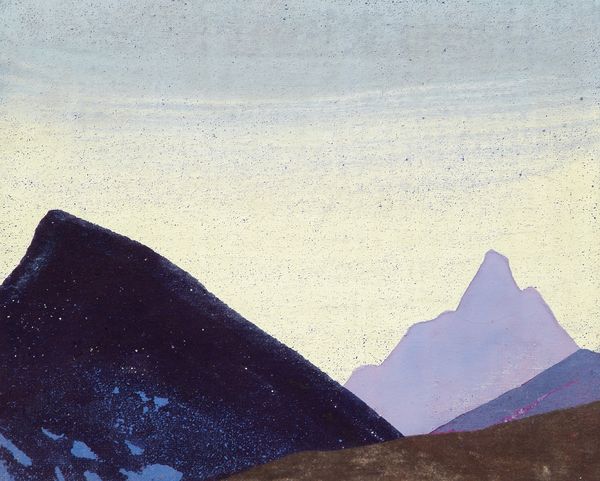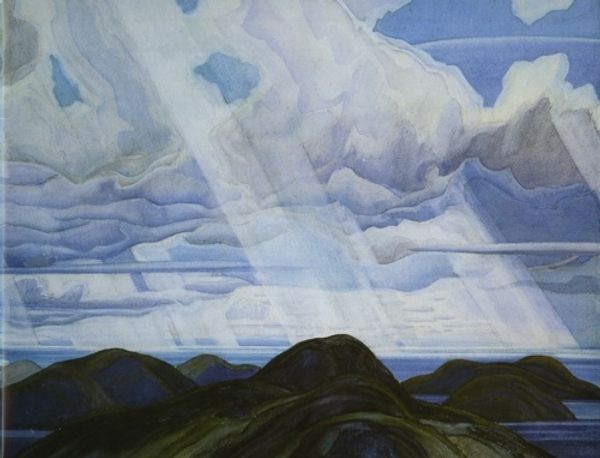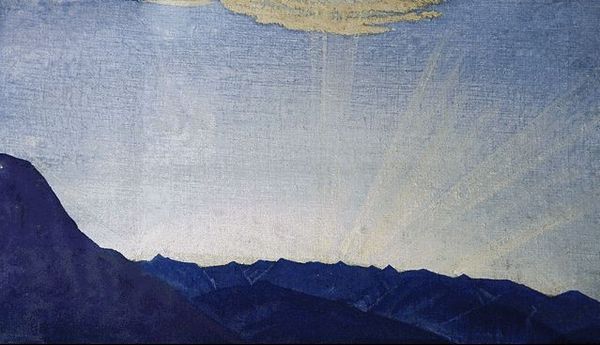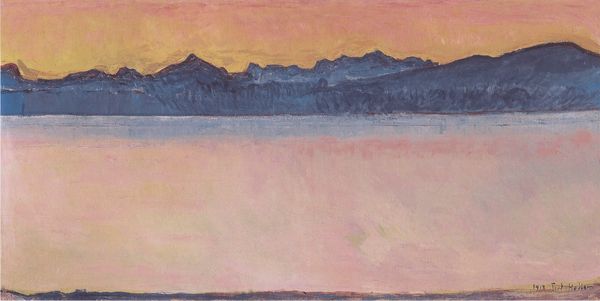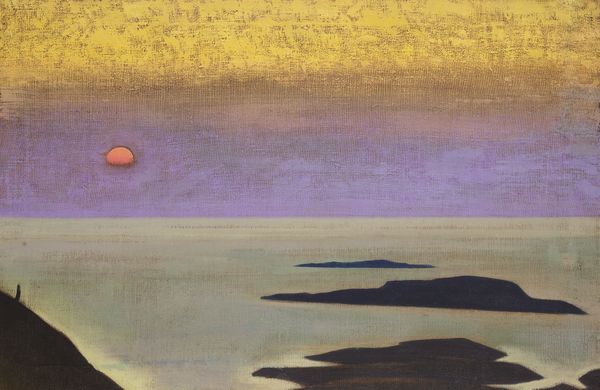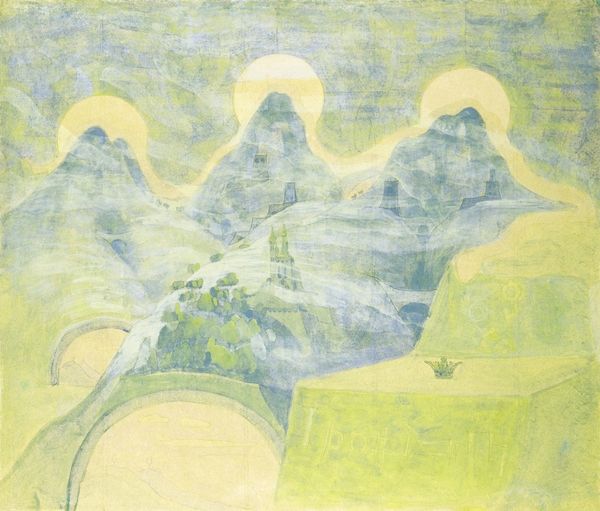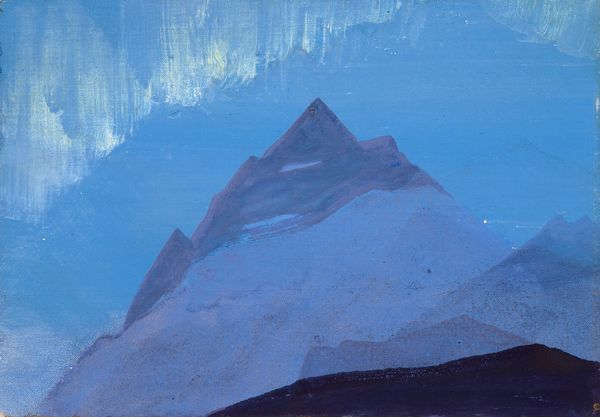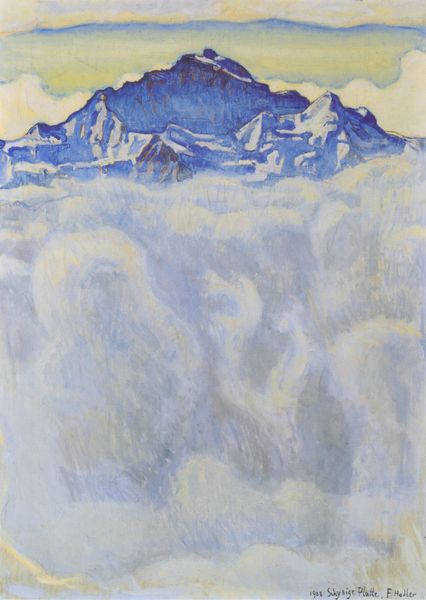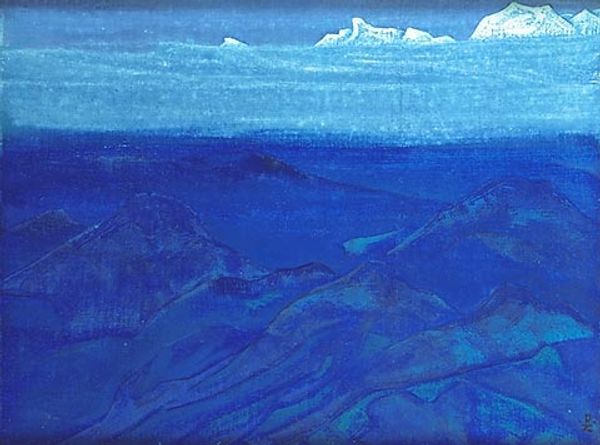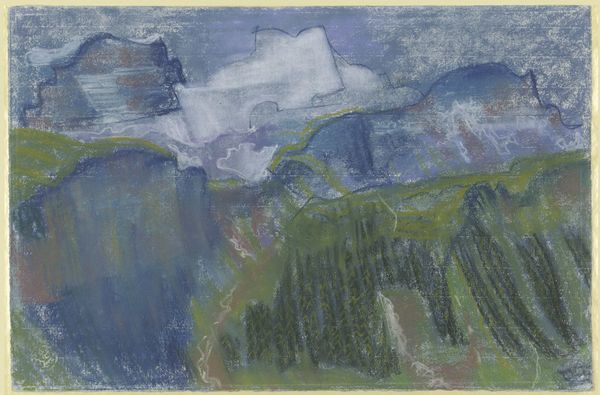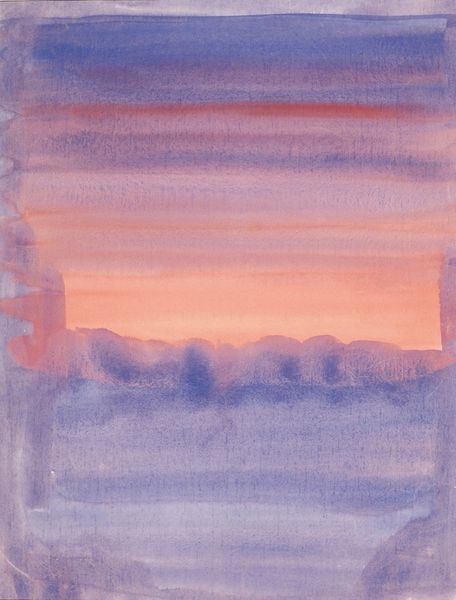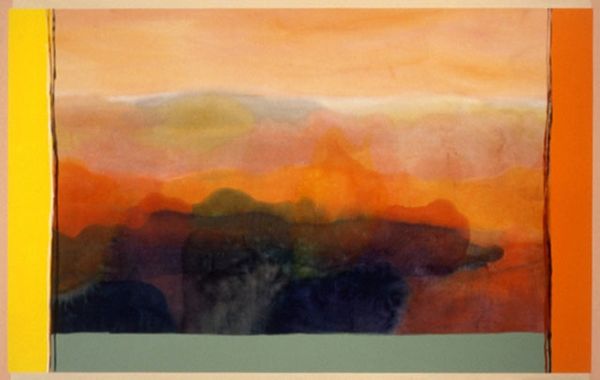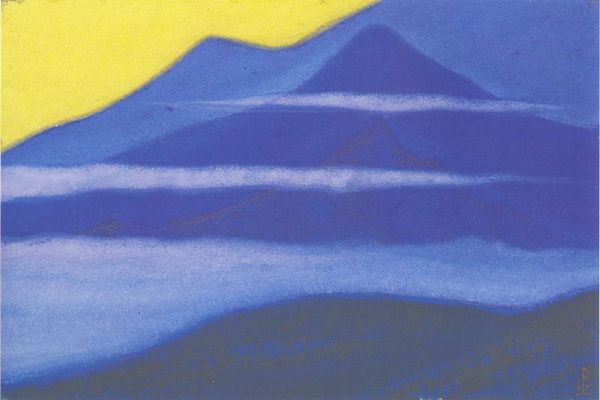
Dimensions: 82 x 163 cm
Copyright: Public domain
Curator: Standing before us is Nicholas Roerich's "Bridge of Glory," painted in 1923, now held at the Nicholas Roerich Museum in New York. Editor: Well, immediately, I'm struck by this monochrome blue. It feels isolating, but the upward lines suggest something aspirational, some form of transcendence. Curator: Roerich was deeply immersed in symbolism, so the shades of blue likely hold meaning beyond a mere color choice. Blue represents spirituality, the divine, and wisdom in many traditions, which harmonizes with Roerich's theosophical leanings. Editor: You can see that material presence especially in his characteristic tempera application— it yields such granular yet unified tonalities. Did he use this tempera to emphasize flatness, to bring forth the almost mural-like surface? What was his connection to traditional Russian iconography? Curator: The connection to iconography is definitely pertinent. Roerich, even during his Russian avant-garde phase, was fascinated by sacred imagery and traditional Russian murals. These graphic and emotionally compelling aesthetics bleed into his landscapes as you see in "Bridge of Glory". The bridge motif also resonates— a connection between earthly and divine realms, or perhaps bridging cultures. Editor: It’s as if this single artwork is trying to bridge, to connect so much. I wonder what pigments he had easy access to. The cost of the blues traditionally affected their application in work and in some senses defined luxury. It makes you wonder what kind of blue was luxurious and spiritually transcendent at this moment. Curator: That’s an intriguing thought - particularly if he were striving towards an imagined ideal of synthesis, one expressed by a potent pigment in this case. This "Bridge of Glory" is not just a visual representation but a spiritual diagram. Each line, color, and form seem deliberately chosen to evoke certain emotional and intellectual states within the viewer. It encourages one to reflect on their own spiritual journey, doesn’t it? Editor: Absolutely. Thinking about the materials as conduits for both spiritual meaning and tangible socio-economic value makes me see the work's bridging effort so clearly now, thanks.
Comments
No comments
Be the first to comment and join the conversation on the ultimate creative platform.
